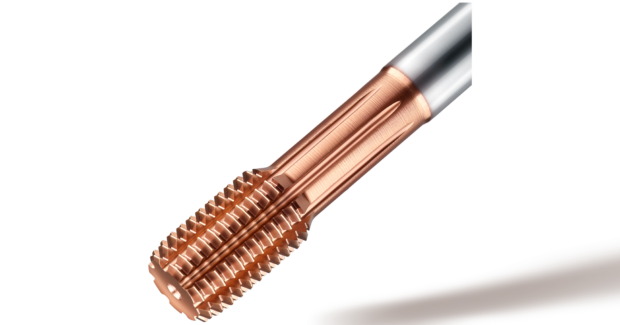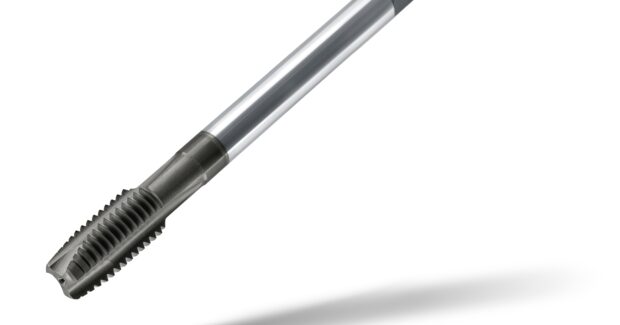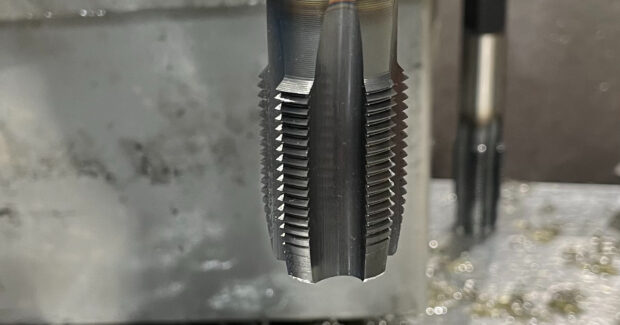Optimizing Tapping Processes for Hard Materials: A Key to Enhancing Manufacturing Throughput
Understanding the intricacies of the tapping process enables your shop to overcome challenges, improve overall throughput and reduce scrap.
Posted: September 30, 2024
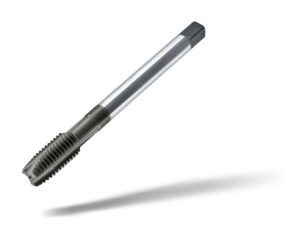
In today’s competitive manufacturing environment, optimizing every aspect of the production process is essential to maintaining efficiency and profitability. Tapping hard materials presents unique challenges that, if not properly addressed, can lead to increased tool wear, machine downtime, and compromised product quality. Because tapping is often performed late in the production process, mistakes here which create scrap are much more costly than earlier stage mistakes as a significant amount of machining time has already been invested in the workpiece. Additionally, as these tougher to machine materials are often more expensive, scrapping a part becomes even more costly. However, by applying specific strategies and understanding the intricacies of the tapping process, manufacturers can not only overcome these challenges but also improve their overall throughput and process efficiency and reduce scrap due to tapping problems.
Understanding Material Characteristics
One of the critical steps in optimizing the tapping process is understanding the material characteristics of the workpiece. Whether dealing with titanium alloys, superalloys, hardened steels, or duplex stainless steels, the properties of these materials — such as hardness, tensile strength, and heat treatment — directly influence the choice of tap and tapping strategy.
For instance, titanium alloys and superalloys are prone to work-hardening and tend to grip the tap, which can result in tool failure. To mitigate these issues, manufacturers should opt for taps with high rake and relief angles, reducing cutting forces and preventing work-hardening. Similarly, when tapping hardened steels (especially those over 44 HRC), using taps with a negative rake angle can reduce cutting forces and edge chipping, leading to more durable and precise threads.
Application Example: Tapping Threads on Lock Nuts Made from 316 Stainless Steel
A manufacturer faced challenges when tapping threads on lock nuts made from 316 stainless steel. The stamping process left the entrance of the nuts slightly smaller than required, creating a burr at the start of the thread, and complicating the tapping process. By customizing the tap design the manufacturer was able to eliminate the interference and improve thread quality. Consistently producing on-spec parts each time virtually eliminated rejected parts, improving quality, and driving down costs. This example highlights the importance of tailoring the tap design to the specific application to enhance efficiency and reduce tool wear.
Enhancing Throughput with Customized Tapping Solutions
Manufacturers looking to improve their throughput should consider the following key strategies:
- Selection of High-Performance Taps: Using taps made from advanced materials, such as high-speed steel with cobalt (HSS-E), powdered metal, or carbide, can significantly extend tool life and improve process reliability.
- Coating Selection: Additionally, applying specialized coatings, like TiN, AlCrN, or PVD coatings, or proprietary coatings such as GMAXX, or RED MAXX, reduces friction and heat buildup, further enhancing tool performance.
- Pre-hole Preparation: Proper preparation of the pre-hole, including selecting the correct drill diameter and ensuring precise hole alignment, is crucial for successful tapping. In challenging materials like duplex stainless steels, using carbide drills and maintaining tight tolerances can prevent work-hardening and ensure optimal thread quality.
- Optimization of Cutting Parameters: Adjusting the cutting speed, feed rate, and lubrication method to match the material properties and tap design can greatly influence tool life and thread quality. For instance, in a case involving the tapping of high-strength sheet steel, increasing the cutting speed from 25 m/min to 40 m/min while using a tap with oil grooves and multi-lobe design resulted in a 50% increase in tool life.
Application Example: Subframe Part Tapping in High-Strength Sheet Steel
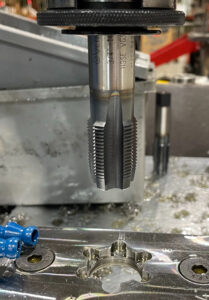
In an application involving the tapping of subframe parts made from HSA high-strength sheet steel, the manufacturer was able to significantly extend tool life by optimizing the cutting parameters. By increasing the cutting speed and using a specially designed forming tap with oil grooves and multi-lobe geometry, the manufacturer improved throughput and reduced tool changeovers, ultimately enhancing process efficiency. Another reason this tap was able to increase performance was because of a proprietary coating that was applied to the tap allowing it to run faster and longer. The previous solution achieved 12,000 threads in tool life, the new solution achieved 18,000 threads.
Reducing Downtime with Improved Chip Evacuation
In deep hole tapping, chip evacuation is a critical factor that can affect both tool life and thread quality. Carbide forming taps, which eliminate chip production, are particularly advantageous in applications such as smaller diameters taps where chip evacuation is difficult. Additionally, using high-quality tapping lubricants and synchro tap holders can minimize friction, reduce the risk of tap breakage, and ensure consistent thread performance. Minimizing or preventing tap breakage leads directly to minimizing or eliminating downtime required to remove the broken tap, and likely the scrapping of the part. Depending on the value of the workpiece scrap values can add up quickly and overtake the cost of custom taps and coatings.
Application Example: Shaft Locking Device in Power Generation
In the power generation industry, tapping threads in shaft locking devices made from 4140PH presented significant challenges due to the material’s hardness and the depth of the thread. By using a tap with a straight flute design and integrating a high-performance coating, the manufacturer achieved a threefold increase in tool life compared to the standard spiral point tap previously used. This improvement not only reduced downtime but also enhanced overall process reliability. Tool life increased from 80 threads to 200.
Leveraging Best Practices to Enhance Manufacturing Efficiency
To achieve superior tapping results in hard-to-machine materials, manufacturers must employ best practices that include:
- Regularly Reviewing Machine Torque Curves: Ensuring that the machine operates within the optimal torque range for tapping hard materials is essential to prevent stalling and tool failure. Spindle slippage, which can occur with belt-drive machinery, prevents the unit from attaining its maximum rpm, thus limiting its cutting effect, and preventing the tool from reaching its optimal performance.
- Utilizing Thread Milling as an Alternative: In certain applications, thread milling can offer a reliable alternative to traditional tapping by reducing the load on the tool and allowing for multiple passes, which enhances thread quality.
By integrating these practices into their manufacturing processes, companies can improve throughput, reduce tool wear, and maintain high levels of product quality, even when working with challenging materials.
Achieving Operational Excellence Through Process Optimization
Manufacturers who invest in optimizing their tapping processes can expect significant improvements in both efficiency and product quality. By carefully selecting the appropriate taps, optimizing cutting parameters, and employing advanced lubrication and cooling techniques, it is possible to overcome the challenges posed by hard materials and achieve superior results.





